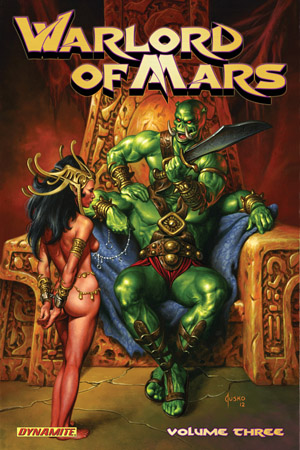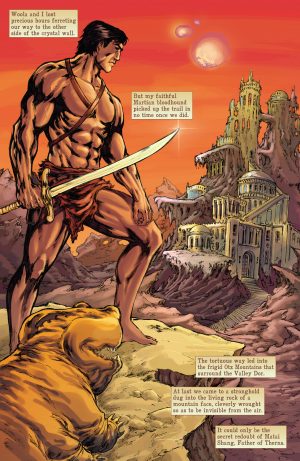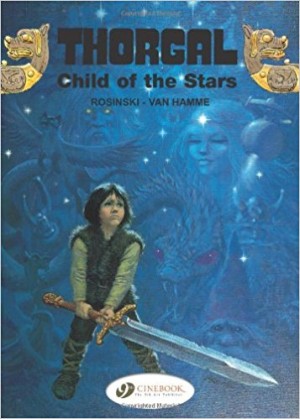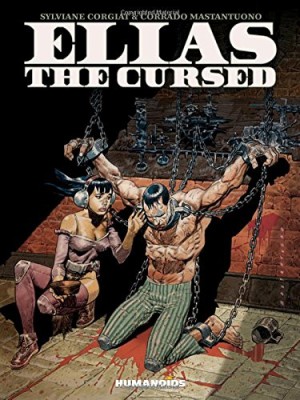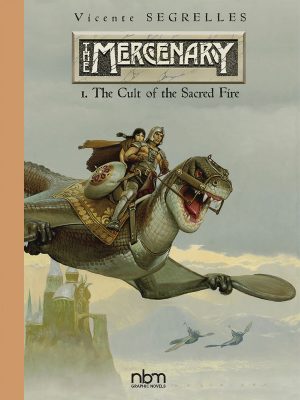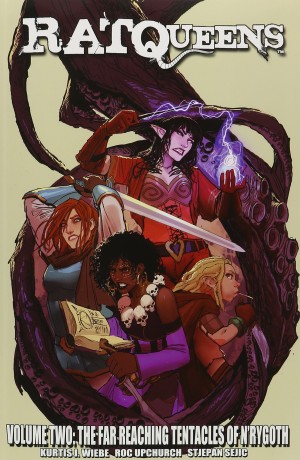Review by Frank Plowright
This third Warlord of Mars volume continues the pattern of a new story by Arvid Nelson preceding his adaptation of material created by Edgar Rice Burroughs, in this instance his third novel actually titled Warlord of Mars.
It’s a tricky proposition as Burroughs’ plot ended volume two with a cliffhanger. 19th century Earthman John Carter returned to Mars (or Barsoom, as it’s known to the natives) after several years, and orchestrated a campaign to overthrow false gods, only to see his wife Dejah Thoris abducted before a proper reunion could take place. It proved a bittersweet victory.
Nelson’s opening two chapters take the idea of Burroughs’ Atmosphere Factory and reveal that its opposite was also created, intended to destroy Barsoom should the First Born no longer hold power. The High Priest of Issus intends to activate the machine, and he’s the only one aware of its location, although the haughty Linea may have a clue. By focusing on characters that Burroughs in effect discarded, Nelson creates a taut thriller, illustrated in suitably grandiose fashion by Stefano Martino.
He’s far better than primary artist Leandro Oliveira, who supplies overly muscled and permanently grimacing men and overly sexualised and objectified women. Neither are his landscapes or locations as impressive of those provided by his predecessors. Perhaps in slight mitigation, the story he’s given isn’t as interesting as those they drew. Despite Nelson’s best attempts to disguise it, the template of serialisation is apparent in what’s almost all a continual chase sequence as Carter follows his wife’s abductors to assorted locations, never quite performing the complete rescue until the final chapter. Of course, the quest is a staple of fantasy fiction, still relatively novel when Burroughs wrote his story in 1913, but now the most common method of filling pages for the less imaginative fantasy writer. Burroughs varies his locations and beasts, but it’s still one landing, new civilisation, and combat after another.
It’s only in the more considered final chapters that this adaptation finally displays some spirit, but that’s blighted by some positively primitive attitudes toward women manifesting in what’s supposed to be a tragic unreciprocated love, but which 21st century attitudes would interpret differently.
Those who really love the original material will find a relatively faithful adaptation, but one that doesn’t match that of the first two Mars novels. It’s also available combined with volume four as Warlord of Mars Omnibus volume 2.
